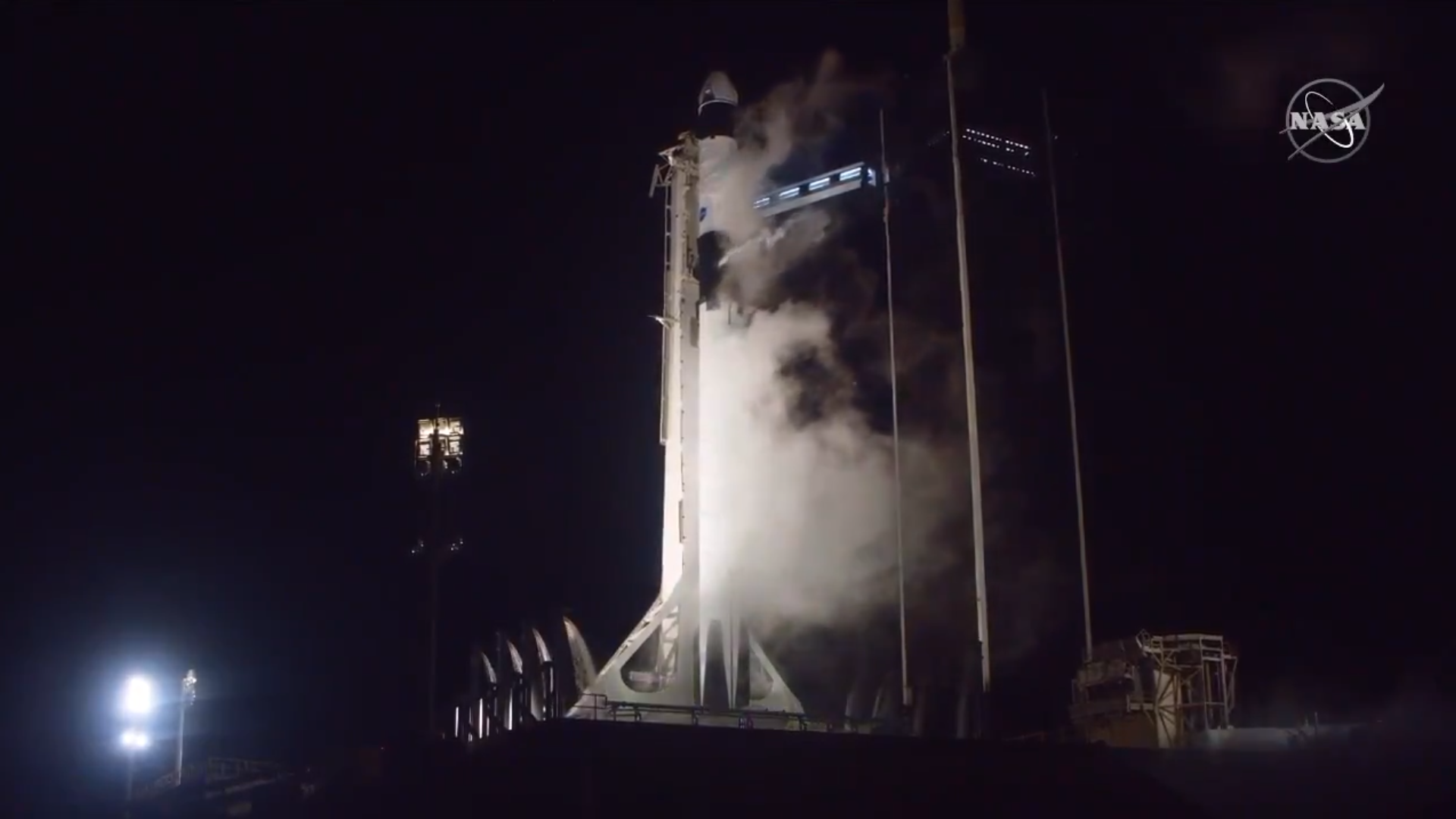
CAPE CANAVERAL—A SpaceX Falcon 9 rocket lifted off from Kennedy Space Center on Nov. 15, sending a Crew Dragon spacecraft with four astronauts on its way to the International Space Station (ISS), the first U.S. government-certified flight of a commercially developed crewed orbital transportation system.
The Falcon’s nine kerosene- and liquid-oxygen-fueled Merlin engines ignited at 7:27 p.m. EST, boosting the 229-ft. rocket from Launch Complex 39A. Two min. 37 sec. later, the first stage separated, flipped around and headed toward a drone ship stationed off Florida’s Atlantic coast, several hundred miles northeast of the launch site.
The first stage touched down 10 min. after liftoff, setting the stage for reuse on SpaceX’s next crew launch around March 30.
Meanwhile, the rocket’s second stage, powered by a single, vacuum-optimized Merlin engine, delivered the Crew Dragon capsule, named Resilience, into an initial orbit 118-130 mi. (190-209 km) above Earth. It is scheduled to make an automated rendezvous and docking at the ISS around 11 p.m. on Nov. 16.
Strapped in a row inside the capsule were Crew Dragon Commander Michael Hopkins, pilot Victor Glover and mission specialist Shannon Walker, all with NASA, and Japan Aerospace Exploration Agency (JAXA) mission specialist Soichi Noguchi. The astronauts are expected to spend six months working on the ISS, joining a three-member crew already on orbit.
Hopkins and Walker each have made one previous long-duration ISS mission, launching and landing aboard Russian Soyuz capsules. Glover, who becomes the first African American to be part of an ISS resident crew, is making his first flight. Noguchi returns to space for a third mission, having previously flown on the space shuttle and Soyuz.
The mission, known as SpaceX Crew-1, is the culmination of a 10-year, $6 billion effort by NASA to restore U.S. human orbital spaceflight capabilities following the retirement of the space shuttles in 2011. Under the Commercial Crew Program, NASA funded development and purchased crew flight services from SpaceX and Boeing, building on the public-private partnerships the agency developed for ISS cargo resupply services.
SpaceX completed a successful crewed flight test to the ISS in August with NASA astronauts Robert Behnken and Douglas Hurley, paving the way for certification of its Falcon 9/Crew Dragon system.
“I believe 20 years from now, we’re going to look back at this time as a major turning point in our exploration and utilization of space,” said Phil McAlister, director of commercial spaceflight development at NASA Headquarters. “It’s not an exaggeration to state that with this milestone, NASA and SpaceX have changed the historical arc of human space transportation.”
As a commercial flight, the Crew-1 mission was licensed by the FAA, its first human orbital spaceflight.
Boeing plans to repeat an uncrewed flight test of its CST-100 Starliner in early 2021, followed by a crewed flight test and first post-certification mission. Starliner flies on United Launch Alliance Atlas V rockets.
The Crew-1 launch was delayed one day due to weather concerns at the Florida spaceport and downrange for booster landing and recovery.





